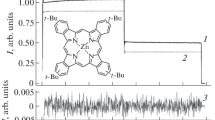Summary
The solubilities and other properties of compounds made by combination of optically active components, e.g. the solubilities of the salts made from the dextro-form of an acid and the dextro- or the laevo-form of a base are in some instancesextremely different. It is a consequence of these differences that in a living organism, containing optically active substance,the degree of optical purity of these substances is of outmost importance. The presence of “undesired” antipodes of any kind might fundamentally disturb the metabolism. It is also known that living organisms at least partly and continuously produce the optically active substances needed bysynthesis from optically inactive material.
A kinetical and thermodynamical study of the conditions under which optically active substances can, with use of optically active catalysers, be synthetized from inactive material, shows that the degree of optical purity of the material synthetized is, even under the most favorable conditions, maximum in the beginning of the synthesis andis bound to decay when the synthesis is, chemically speaking,completed and if the synthetized material is left in contact with the catalyzer. Thus a racemization of the synthetized active material occurs in which the catalyzer which has originally produced this active substance actively accelerates the deterioration of its state of optical purity.
The means are discussed by which the organism is able to delay this loss of optical purity; and it is shown that all poosible means to do so are indeed used by the organism. As these means can delay but never completely avoid the decay of optical purity, this decay, even if it be slow, i.e.an ageing of optical purity, is a necessity in the course of the life of a living organism. As a loss of optical purity must disturb the normal metabolism, this must, even if no other events occur, limit the individual life.
Experimental evidence which would check the prediction of decay of optical purity with age is incomplete; in several instances, however, the experimental technique permits us to detect and to follow the occurrence of finite small amounts of “undesired” antipodes, e.g. of some amino acids in the proteins of living organisms.
Similar content being viewed by others
References
W. Kuhn undK. Vogler, Z. Naturforsch.6b, 232 (1951).
Für eine Zusammenstellung von Verschiedenheiten diastereoisomerer Verbindungen siehe zum BeispielW. Kuhn, Ergebn, Enzymforsch.5, 1 (Leipzig 1936); ebenso inF. F. Nord undR. Weidenhagen,Handbuch der Enzymologie (Leipzig 1940), S. 188.
W. Kuhn, Ergebn. Enzymforsch.5, 1 (1936); Z. angew. Chem.49, 215 (1936); Z. Altersforsch.1, 325 (1939).
L. Rosenthaler, Biochem. Z.26, 1, 7 (1909); Arch. Pharm.248, 105 (1910).
K. Feist, Arch. Pharm.247, 226, 542 (1909);248, 101 (1910).
M. W. Bayliss, J. Physiol.46, 236 (1913).
E. Nordefeldt, Biochem. Z.118, 15 (1921);131, 390 (1923);137, 489 (1923);159, 1 (1925).
H. Albers undK. Hamann, Biochem. Z.255, 44 (1932).
Auf Grund von Angaben, die einer Arbeit vonA. Meister, L. Levintow, R. B. Kingsley undJ. P. Greenstein [J. Biol. Chem.192, 535 (1951)] entnommen werden können, wäre kd/k1 für die Einwirkung von d-Aminosäureoxydase auf d- bzw. 1-Alanin und d- bzw. 1-Serin mindestens gleich 104. Für die obenerwähnte Mandelsäurenitrilsynthese mit Emulsin als Katalysator ist der Quotient mindestens 100mal kleiner, zu einem grossen Teil wohl deswegen, weil hier die unkatalysierte Reaktion schon eine messbare Geschwindigkeit besitzt.
H. Albers, undE. Albers, Z. Naturforsch.9b, 122, 133 (1954).
B. Hargitay undW. Kuhn, Z. Elektrochem. u. angew. physikal. Chem.55, 539 (1951).
H. Wirz, B. Hargitay undW. Kuhn, Helv. physiol. acta9, 196 (1951); siehe auchW. Kuhn undR. Ryffel, Hoppe Seylers Z. physiol. Chem.276, 146 (1942).
H. A. Krebs, Z. physiol. Chem.217, 191 (1933); Biochem. I29, 1620 (1935).
M. Rubner,Das Problem der Lebensdauer und seine Beziehung zu Wachstum und Ernährung (Verlag R. Oldenbourg, München und Berlin 1908). Siehe auchM. Bürger,Altern und Krankheit, 2. Aufl. (Verlag G. Thieme, Leipzig 1954), insbes. S. 9.
F. Kögl, Klin. Wschr.1939, 1, 801; Exper.5, 173 (1949).
F. Kögl undH. Erxleben, Hoppe-Seylers Z. physiol. Chem.258, 57, 154 (1939); Naturwissenschfaten27, 486 (1939).
F. Kögl, H. Erxleben undA. M. Akkermann, Hoppe-Seylers Z. physiol. Chem.261, 141 (1939).
F. Kögl, H. Erxleben undG. J. van Veersen, Hoppe-Seylers Z. physiol. Chem.277, 251 (1943).
F. Kögl, H. Herken undH. Erxleben, Hoppe-Seylers Z. physiol. Chem.264, 108, 220 (1940).
A. C. Chibnall, M. W. Rees, E. F. Williams undE. Boyland, Biochem. J.34, 285 (1940).
Th. Wieland undW. Paul [B]77, 34 (1944).
D. Rittenberg undD. Shemin, Ann. Rev.15, 250 (1946).
G. R. Tristram, Biochem. Soc. Symp. Nr. 1, S. 33 (1948).
K. Weil undW. Kuhn, Helv. chim. Acta29, 784 (1946).
K. Weil undW. Kuhn, Helv. chim. Acta27, 648 (1944).
G. Hillmann, A. Hillmann-Elies undF. Methfessel, Z. Naturforsch.9b, 660 (1954).
Author information
Authors and Affiliations
Additional information
Vortrag, gehalten vor der Schweizerischen Gerontologischen Gesellschaft in Basel am 11. Dezember 1954.
Rights and permissions
About this article
Cite this article
Kuhn, W. Mögliche Beziehungen der optischen Aktivität zum Problem des Alterns. Experientia 11, 429–436 (1955). https://doi.org/10.1007/BF02172543
Published:
Issue Date:
DOI: https://doi.org/10.1007/BF02172543



